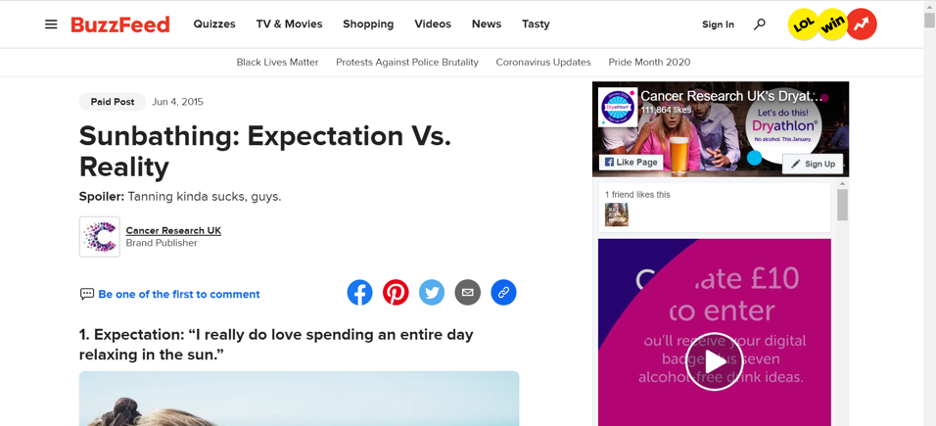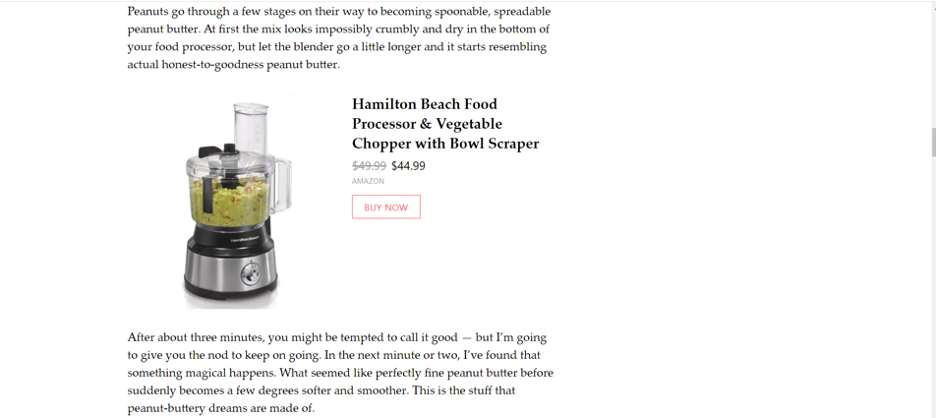Performance marketing is all about getting measurable results on your ad spend. For a long time, soft results like impressions were acceptable ad campaign outcomes. Now, marketers are focusing on quantifiable performance-based results.
As the spotlight on performance marketing picks up, the most interesting results are appearing in highly trackable mediums like PPC and programmatic display.
The ability to cross-reference data and layer campaign analysis makes programmatic and PPC an exciting results-driven option for performance marketing.
Making and managing this change is difficult, especially for brands and well-established businesses with rigid ad systems. In this guide, you’ll learn about how performance marketing works, the types of performance marketing channels, several benefits of performance marketing as well as specific ways to incorporate performance marketing into your campaigns.
What is performance marketing?
Put simply, performance marketing is marketing based on performance. This means that advertisers and marketing companies only get paid when a specific action is completed. The action needs to be connected to concrete performance, such as a sale, lead or click, in order to qualify.
Performance marketing is a broad term, so it’s often applied to a variety of uses and contexts. The main takeaway is that performance marketing places its emphasis on trackable results.
Many people treat affiliate marketing and performance marketing as interchangeable—but they aren’t the same. Affiliate marketing falls under the performance marketing umbrella, yet can only truly become performance marketing when done at scale.
As technology and customer journey data continue to improve, performance marketing goes well beyond affiliate marketing. For example, performance marketing can also include native advertising, sponsored content, social media marketing, search engine marketing and more.
Overall, our perception of performance marketing is consistently evolving as tracking capabilities continue to improve. By incorporating programmatic tools and methods, performance marketing can help to both drive concrete results and create results-driven brand campaigns.
Emarketer projects that programmatic advertising will account for 83.5% of total digital display ad spending in 2019 and estimates that it’ll grow to $80 billion by 2021. With programmatic continuing to grow, it’s a great time for agencies to get on board and use it in tandem with performance marketing.
Who uses performance marketing?
There are four key players in performance marketing:
Retailers and merchants are the businesses that look to promote their products and services through affiliate partners and ad publishers.
Publishers are considered marketing partners in the performance marketing space. They’re the ones who host the ads and help drive conversions.
Affiliate networks and third-party tracking platforms who help manage the merchant and publisher relationship by providing the tools that make performance marketing possible. This includes banners, display ads, links, promotions and corresponding payouts. These networks and platforms are a way for both the publisher and merchant to keep track of campaign results and conversions.
Agencies and OPMs (Outsourced Program Management Companies) can be brought on to manage the program or to support the in-house team. OPMs have specialized expertise and can help brands and merchants scale their performance marketing programs more efficiently and with a faster and higher ROI.
Benefits of Performance Marketing to Agencies and Marketers
Paying based on performance in advertising is a relatively new option. Thanks to improved tracking abilities and the expansion of digital marketing, marketers can now pointedly track, optimize and pinpoint the source of campaign results.
Through programmatic advertising, they can then use these results to market to an even more targeted audience and reach them in the right place at the right time. We’ll discuss this in detail in a later section.
Marketers who are unsure about the benefits of performance marketing should consider the variety of benefits it has to offer.
Simpler Budgeting and Planning
Performance marketing campaigns are easier to budget for than traditional marketing efforts. Why? Because with performance marketing, marketers need to identify goals and provide an ideal cost per action at the outset of the campaign.
From there, it’s simple to find the proper budget based on the required outcomes. For example, a marketer can decide on a $2,500 budget because they estimated it will cost $0.25 per click and have a goal of 5,000 website visits.
Performance marketing lets you work backward from your goal to come up with a clear budget and planned campaign spend.
Only Pay for Results
One of the main benefits of performance marketing campaigns is that you pay strictly for results. This way, there’s no room for any undefined overhead. This aspect is key for marketers who are seeking specific actions like leads or conversions and don’t want to pay for outcomes unaligned with predefined goals.
Because performance marketing is results-oriented, it’s important for marketers to choose a goal and stick with it. Once you create a campaign that is optimized for clicks, you shouldn’t reuse the same campaign for a different KPI. Make sure your team designs creatives and crafts budgets based on the specific campaign goal.
Monitor Performance and Optimize Real-Time
Since performance marketing is largely digital, marketers can monitor campaign performance in real-time. This includes the ad spend and the number of impressions, clicks and conversions.
Optimizing in real-time is most effective when marketers combine performance marketing with programmatic display and PPC. Programmatic ads can help increase ROI whilst reaching consumers at scale and deliver performance for marketers according to the KPIs they set.
By having real-time metrics on hand, marketers and agencies can tweak and pivot campaigns if they see something is working particularly well, such as a certain headline or call-to-action. Marketers can monitor the campaign in real-time and subsequently reassign budgets if the campaign isn’t on track to meet expectations.
How Performance Marketing Works
There are a few key steps brands and advertisers should follow when getting started with performance marketing.
Understanding Performance Marketing Outcomes
Because performance marketing is based on metrics, it’s important to get familiar with the different conversion types. Here are the main types of outcomes that performance marketing can generate:
- Cost per Impressions (CPM): Cost per thousand impressions (“cost per mille”) denotes the price of 1,000 advertisement impressions. For example, if a website publisher charges $4.00 CPM, that means an advertiser must pay $4.00 for every 1,000 impressions of its ad. CPM is common for social media, programmatic displays and native advertising.
- Cost per Click (CPC): Cost per click is when an advertiser pays a cost to a publisher for every click on an ad. CPC is often used for paid search engine results.
- Cost per Lead (CPL): Cost per lead is a pricing model in which the advertiser pays a pre-established price for each lead generated. A lead is considered generated when contact information is exchanged—like signing up for a free webinar or email list.
- Cost per Acquisition (CPA): Cost per acquisition is when you pay for every acquisition, like a sale or form submission, that a publisher’s advertisement campaign generates. Because you define what counts as an acquisition ahead of time, you only pay when that specific action occurs.
- Cost per Sales (CPS): Cost per sales is the amount the advertiser must pay once a sale is generated from an ad or campaign.
How to Reach Your Target Audience & Distribute Ads
No single platform will show your ad campaign every time. Here are some things to consider when choosing which platform to run your campaign on:
Target audience and segmentation. Each ad platform provides ways for you to reach your target audience through segmentation. Depending on the platform, segments can include age, sex, location, past buyer behavior and other helpful insights. For example, Facebook offers audience segmentation that can go deeper by taking into account audience interests, popular time slots and Facebook groups in which they participate.
Bidding. Many ad platforms use programmatic capabilities to determine how and when to show your ad to your chosen target audience. Bidding can be helpful when you have a hard upper limit on your ad spend, or you want to set a daily ad spend limit so your campaign can last for a certain amount of time.
Ad quality and relevance. Although your chosen platform promises to show your ad, it will limit its reach if the analytics show that it’s not performing well. Each ad platform has its own algorithm that determines how your ad is performing. If it underperforms, ad platforms may pull back your ad to protect their reputation for showing relevant and high-performing ads.
Conversion. Regardless of which conversion you choose, performance marketing is based on consumers taking action. When the required action doesn’t take place, the publisher won’t get paid. Networks and publishers are incentivized to ensure that your ad converts and will display it more often if it performs well.
How to Craft a Performance Marketing Plan
Your performance marketing strategy should be based on your specific goals. To formulate a plan, you’ll want to consider your target audience, your ideal ad spend and the specific conversion you hope to achieve.
Once you have that outlined, you can begin to research performance marketing opportunities. Whether it’s through content marketing, affiliate marketing or a social media platform, look for companies that specialize in your preferred conversion type.
When ready, run the campaign. Have someone on your team monitor the campaign’s progress. Performance marketing programmatic ads can often be altered and optimized in real-time to ensure you get the most out of your ad spend.
Finally, make time in your schedule to debrief about the campaign. Look for the parts of the campaign that worked and also which parts underperformed. Have a central place to keep track of analytics and metrics to determine which sources of traffic are performing best. Next time you run a campaign, refer to your action points and then reallocate ad funds accordingly.
By continuously using your insights to improve your campaigns, performance marketing can grow sales and increase your return on investment.
Types of performance marketing channels (with examples)
There are various types of performance marketing channels and each has a unique purpose. Let’s dive in.
Native Advertising
Native advertising is a form of paid media that follows the form and function of the site on which it’s placed. Unlike display ads or banner ads, they appear to be a natural part of the site and are often placed dynamically based on each user. Native advertising is common on news and social media sites and is commonly paid through CPM or CPC.

For example, this article in National Geographic is partner content with the Ministry of Communications and Information in Singapore. The article hopes to show the vibrant food and hawker culture of Singapore and inspire people to travel there. It’s a great native ad since it’s well-aligned with National Geographic’s focus on society, culture, and travel.
Sponsored Content
Sponsored content is a dedicated post or article that is created to promote a brand or specific product in return for some form of compensation. Social media influencers and content sites commonly use sponsored content.
Compensation for sponsored content is typically paid out based on CPM, CPA or CPC.

In this example, Cancer Research UK sponsored an article in Buzzfeed on sunbathing. In this list, Cancer Research UK appealed to Buzzfeed’s audience through fun and relatable content, while also educating on the importance of sunscreen and other tips to avoid skin cancer. Buzzfeed also allows their sponsors to embed links to their Facebook, Twitter feed and other related content.
Social Media Advertising
Social media advertising uses social media platforms to gain traffic or brand awareness, such as posting content on Facebook, Pinterest or Instagram. The metrics that are measured for social media-based performance marketing are usually centered around engagement, likes, clicks and sales.
Social media advertising is especially good for brand awareness campaigns. Although ‘awareness’ isn’t typically seen as a performance result, marketers can run performance marketing campaigns with programmatic ads to better track campaign metrics and success.
Programmatic ads allow for granular tracking and detailed insights that can make brand awareness campaigns a success.

This Facebook Ad by Slack is a great example of taking advantage of the medium in which you’re marketing. Because this ad was placed on Facebook, Slack chose a playful meme-style ad that aligned similarly with the content around it. It appeals to people personally and makes a communication tool seem fun and exciting to use.
Search Engine Marketing
Search engine marketing works through two main methods: paid and organic. Some advertisers will use both to increase the likelihood of conversions.
Paid search marketing is when an advertiser pays for clicks to ads on search engines such as Google, Bing, and Yahoo.
Organic search is when advertisers rely on applying search engine optimization (SEO) best-practices to use the engine’s algorithm to rank in the top results for certain search terms. This is usually paid out by CPC. Search engine marketing with Google is especially great for ROI, with the average being $8 for every $1 spent.
Search engine marketing results can be measured either on a performance basis, or some pay commissions to SEM companies and campaigns based on results.

This Google search results image highlights how paid search results typically appear towards the top of the page or on the side. They’re denoted by the yellow ‘Ad’ symbol.
Affiliate Marketing
Affiliate marketing is the process by which a marketing partner (or “affiliate”) earns a commission for promoting another person’s or company’s products. The affiliate searches for a product they’d like to promote and then markets that product.
If somebody takes action with the affiliate’s promotion, the affiliate will earn a portion of the profits. Online affiliate marketing is often tracked through unique links that are used to track the origin of the sale.
Affiliate marketing is often paid out via a free product or service (which is often in-turn used to promote it), and/or based on CPM, CPA or CPC.

For example, food blog The Kitchn embeds affiliate links to relevant products throughout their recipes. Amazon is often the go-to choice for affiliate links since they have such a large product marketplace.
The Case for Programmatic Advertising as the Ultimate Performance Marketing Channel
Pairing performance marketing with programmatic advertising is a powerful way to reach specific audiences and drive conversions.
Programmatic advertising is effective at reaching the most relevant customers at the right time, place, and with the right message. By combining this capability with performance marketing, agencies can drive efficiencies whilst reaching consumers at scale and deliver KPI-driven results.
One commonly cited concern with using programmatic tools for performance marketing is the risk of fraud. Although fraud will never go away, the industry is consistently improving on its ability to detect and avoid fraud in the marketplace.
By using curated private marketplaces instead of open exchanges, advertisers can know exactly where their ads will be placed, which provides a higher level of confidence that the inventory is legitimate. Private marketplaces are invite-only, which allows them to screen advertisers and maintain transparent practices.
In addition, the IAB created the ads.txt standard as a way to decrease inventory fraud in mobile apps, OTT and other programmatic ad services. The requirement of ads.txt has yet to be enforced, so to take advantage of this security, choose trading desks, publishers and demand-side platforms (DSPs) that comply with ads.txt to significantly reduce the likelihood of fraud.
In the right hands, programmatic and performance can be a powerful duo. By partnering with a trusted and transparent trading desk, agencies can get ahead and take advantage of highly contextual targeting, data-driven strategies, personalization at scale and more.
Tips to improve your performance marketing strategies
No matter how successful your performance marketing strategy is, there is always room for improvement. Here are some essential tips to improve your performance marketing strategies for future campaigns.
Improve Your Landing Page and Offer
Done right, landing pages can have a big impact on conversions. Having a clear landing page with a compelling offer key to seeing success from performance marketing campaigns.
To optimize your landing page, make sure to test the entire user experience from the moment a user lands on your page to the conversion.
Here are some helpful tips to ensure you’ve created a high-converting landing page:
- Use a relevant and contextual hero image
- Only use one call-to-action
- Use your header and subheader to clearly state your value proposition
- Lead with the benefits, then detail key features
- Include testimonials, reviews and other relevant social proof
A/B Test and Optimize for KPI’s
A/B testing (also called split testing) is essential to consistently and reliably improve your creatives, copy and campaign results. When it comes to performance marketing, try different techniques and strategies to optimize conversions and click-through rates.
Common aspects of your page that can be optimized with split testing include:
- Test different copy: headlines, call-to-actions
- Try different images
- Rearrange key information on the page
- Change the offer (free shipping, pricing, coupon codes)
- Reframe the value and benefits
- Reduce the number of steps in the checkout process (if possible)
Tracking and Monitoring
Monitoring your performance marketing campaigns will help you uncover valuable insights that you can use to improve future campaigns. Without consistently analyzing, evaluating and adjusting your campaign, the results will stagnate or slow with time.
Here are a few examples of key indicators to track and monitor for performance marketing:
- Your key performance metric (CPC, CPA, CPL, etc.)
- Return on investment for ad spend (ROAS)
- Change in social media audience
- Brand awareness rates
- Change in organic traffic
- Sales revenue
Performance marketing trends to watch for in 2020
As performance marketing continues to improve and evolve there are a few trends to watch for:
AI & Machine Learning
With machine learning, performance marketing campaigns are increasingly automated processes. As AI becomes more capable of taking on bigger and more complex roles, the role of the performance marketer will also change.
Marketers will need to become proficient in these new technologies. It’s crucial to understand not just the ways in which they work, but also know the optimal ways to use them. The good news is that with this helping hand, marketers can instead focus their talents on strategies, implementation and content.
Increased Audience Segmentation
The data companies are able to collect is becoming richer every season. Most advertisers now have valuable insights into customer journeys and can understand cross-channel digital marketing performance, segment messaging and much more.
This higher specialization is great for both the consumer and the industry. Better segmentation leads to improved trust and helps deliver better services and efficiencies for client and consumer needs across the board.
Conclusion
Performance marketing has a range of potential benefits for marketers and agencies. By simplifying planning and avoiding unnecessary overhead, performance marketing is a low-risk, high return on investment activity.
When you combine these benefits with programmatic, you can reach niche audiences, boost brand awareness within targeted crowds, experience real-time insights and optimization opportunities, achieve fast ROI and drive new efficiencies.
Although some may have concerns about ad fraud and other setbacks, the industry recognizes programmatic and performance as a powerful pair and is working hard to mitigate any downsides. Innovations continue to decrease fraud, improve ad visibility and more.
Partnering with the right trading desk or agency partner will keep you ahead of the curve and help you take advantage of the latest frontier in paid media advertising.
Images:
Image 1: via National Geographic
Image 2: via Buzzfeed
Image 3: via Hootsuite
Image 4: via Zee Creatives
Image 5: via The Kicthn
